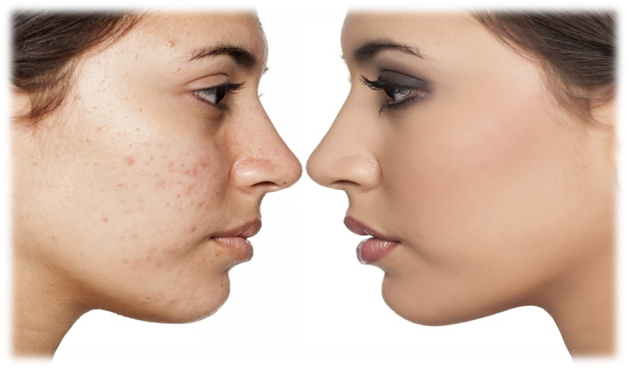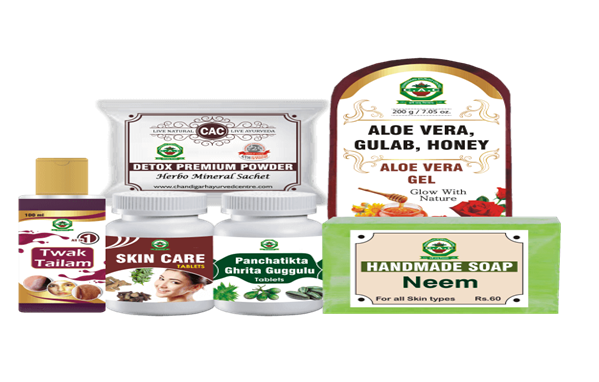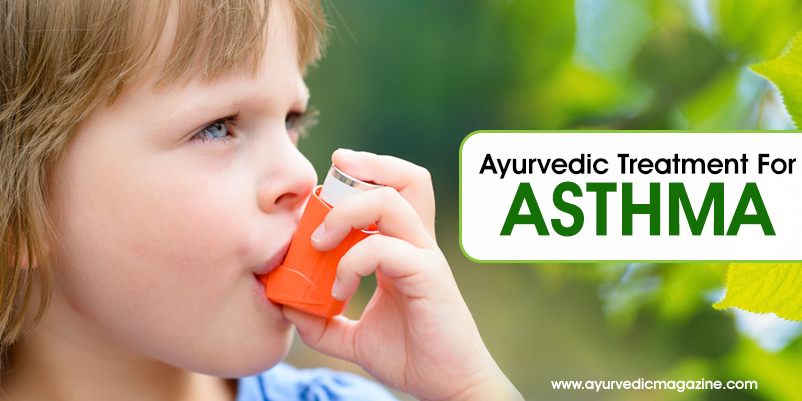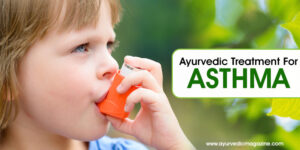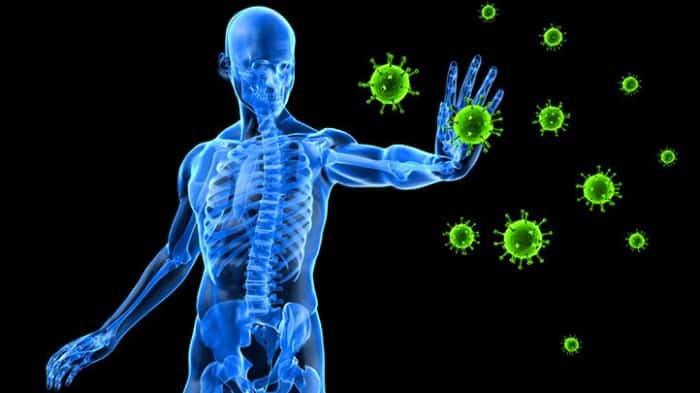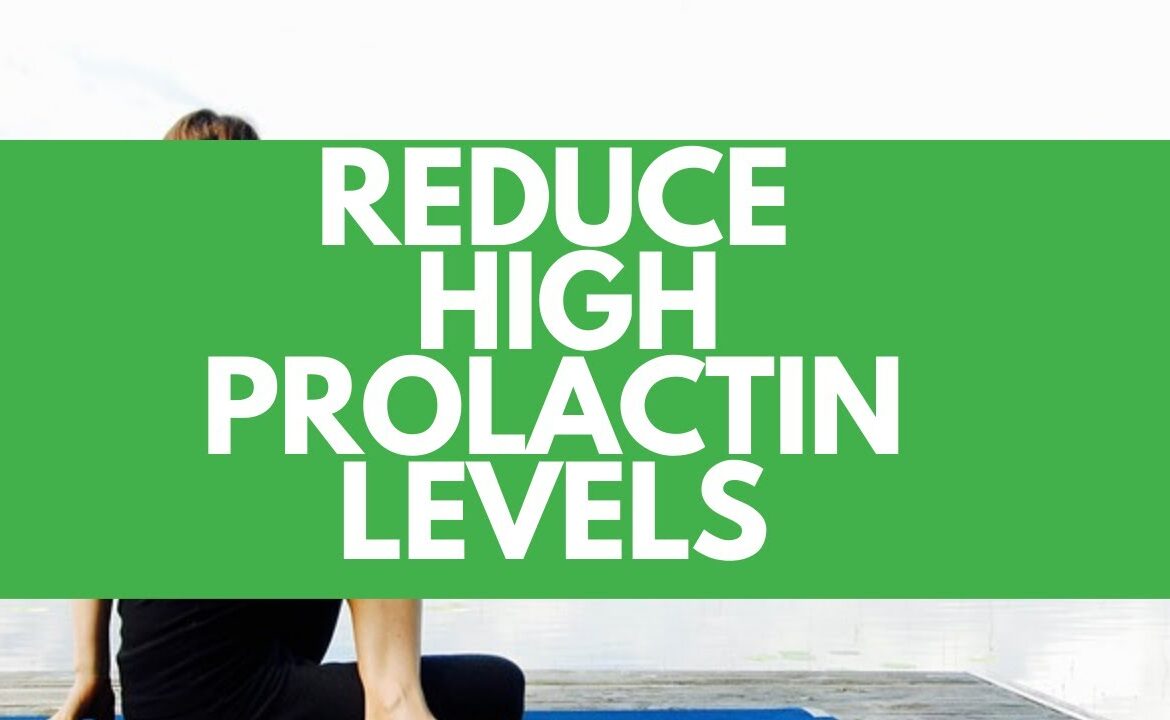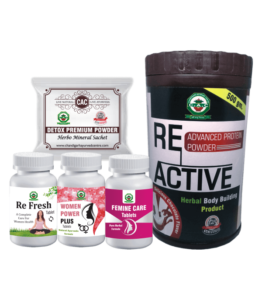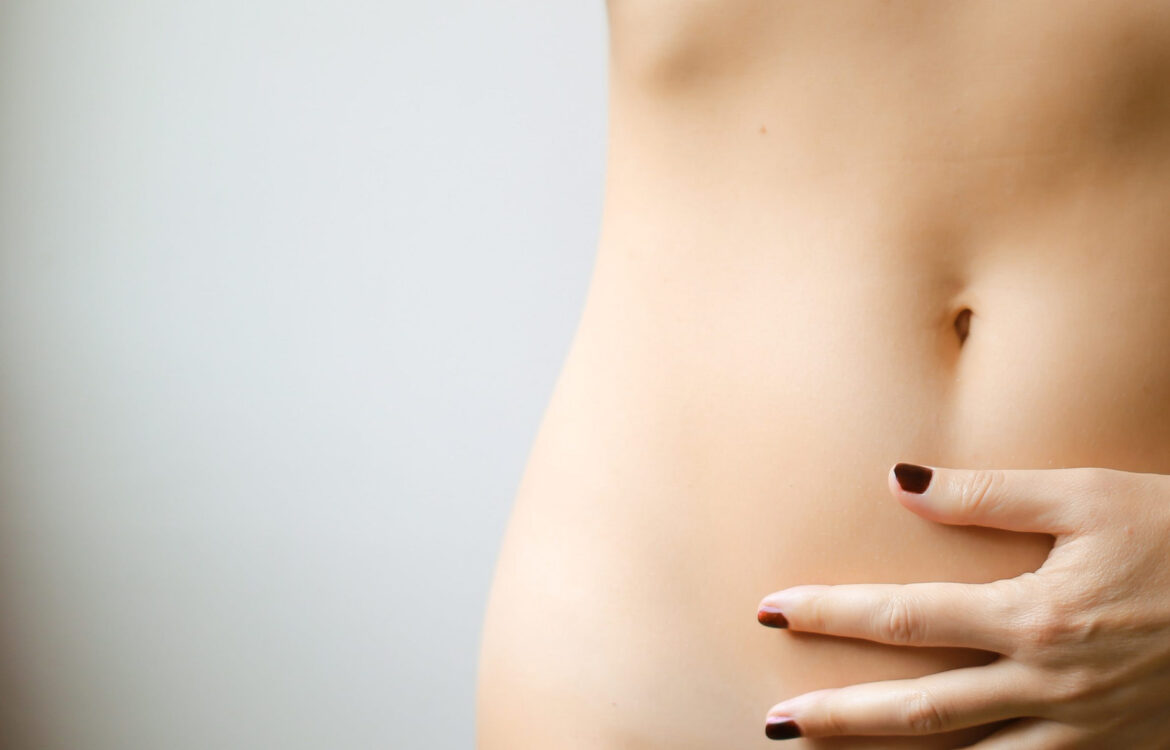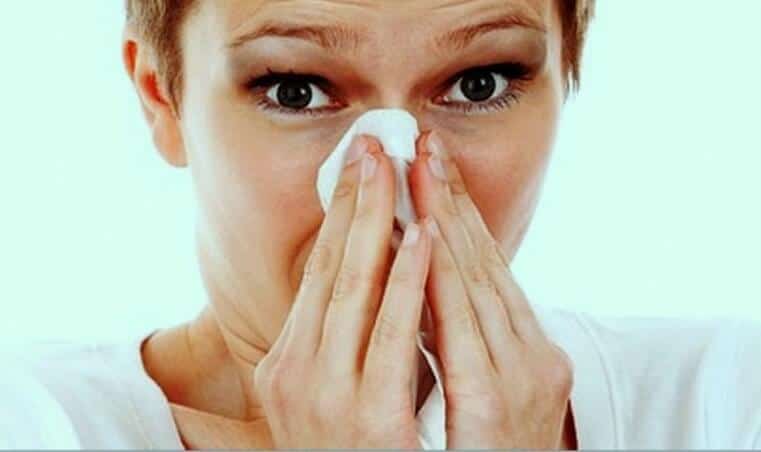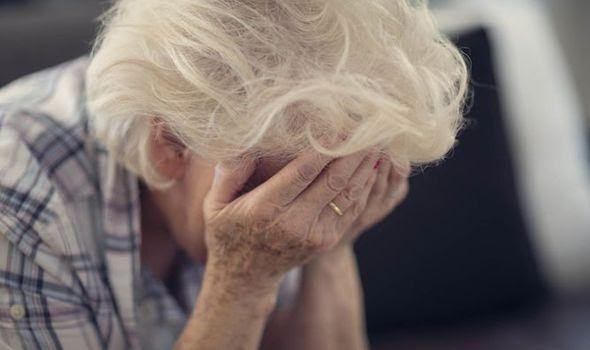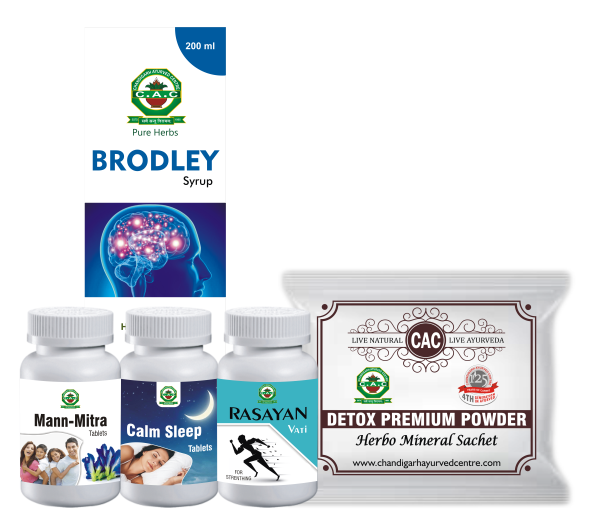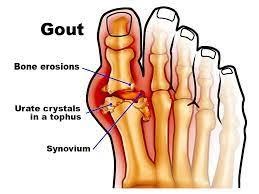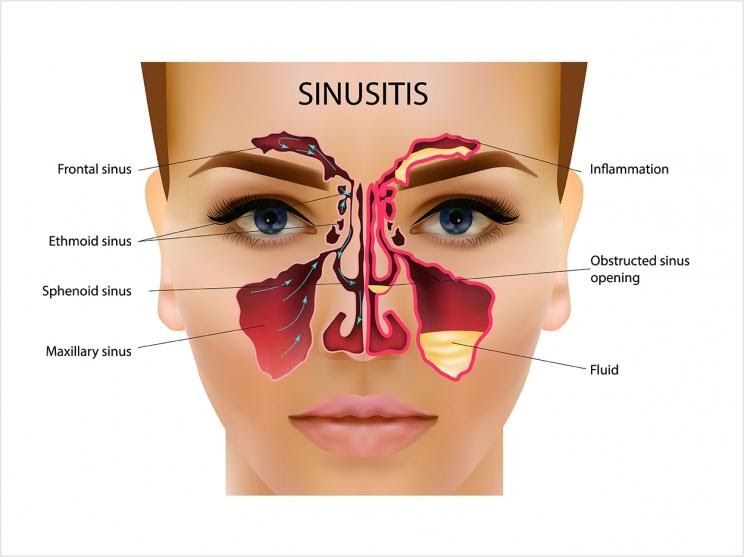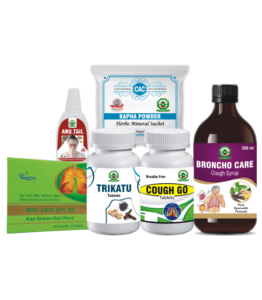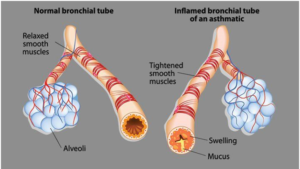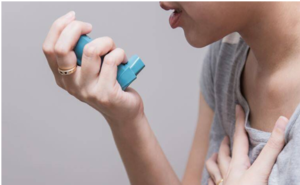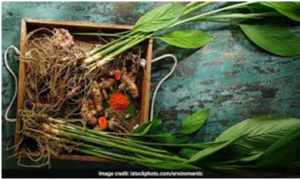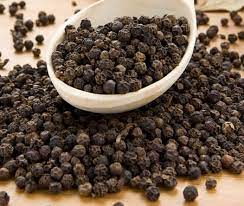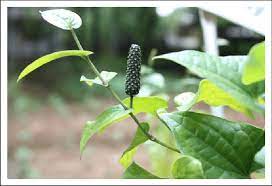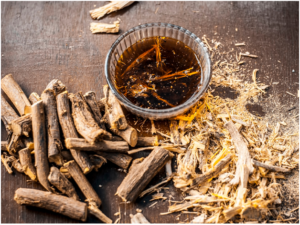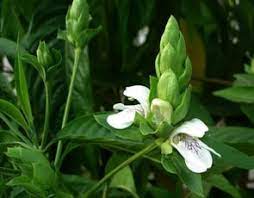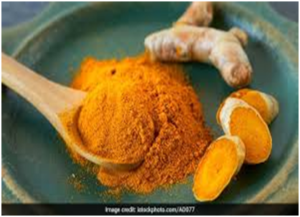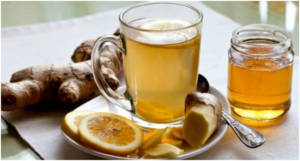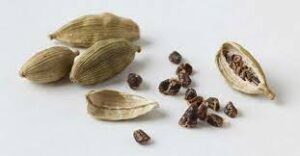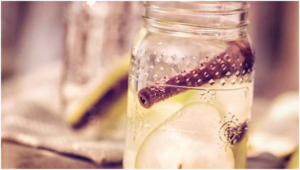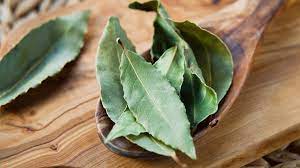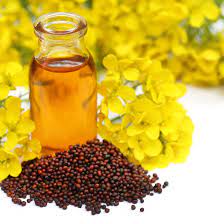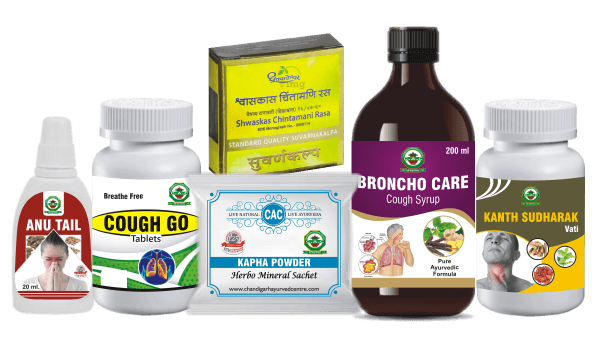Author Archives: Dr. Vaidya Karanvir Singh
How to Remove Dark Spots Caused by Pimples
- July 7, 2021
- Posted by Dr. Vaidya Karanvir Singh
- 0 Comment(s)
- Acne- It is a skin condition that occurs when the hair follicles become plugged with oil and dead skin cells. Commonly it occurs during teen age, but it can affect people of all ages in the form of whiteheads, blackheads or pimples.
- It is battle that almost everyone faces and the scars left behind are what irritate us the most. Dealing with acne is troublesome and the dark spots after acne secures a place on the skin like a bad tattoo.
- There are various products that claim to reduce dark spot but it is difficult to judge which one will actually work?
Ways to Remove Dark Spots Caused By Pimples
How to get rid of dark spot on black skin??
Apart from the cosmetic products for the treatment of dark spots, the natural ingredients can even give you all the solutions to fade away dark spots caused by pimples, effectively.
Vitamin – C
- It is highly effective in fading away dark spots. It is a popular star ingredient for many cosmetic ranges and occurs naturally in many citrus fruits. It is a superb natural depigmentation agent.
- After using the Vitamin C enriched products you will notice a considerable fading of dark spots and glowing skin.
- Vitamin C is also perfect for treating blemishes making it an all-rounder for acne prone skin.
- The person should choose a good vitamin C serum and apply it on daily basis after cleansing your skin.
Retinol :
- It is one of the best ingredients to fade away your dark spots. It is already known to transform skin texture and recover any damage that the skin has undergone with regular application.
- It penetrates deep into the skin’s layers to treat dark spotsthat aren’t even that visible yet.
- The pores will also look refined and acne will get under control after including a retinol cream or serum in your skincare routine.
BUTTERMILK :
- It is rich in lactic acid and it helps to exfoliate dead skin cells and also brighten up your skin. Thus fade away dark spots.
- It also helps to maintain the PH Levels of the skin.
Method of usage- Clean your face with water then gently apply buttermilk to your face with a ball of cotton.
Let it be on the face for 20 minutes and then wash it off with normal water.
Lemon Juice :
- It a citrus fruit and it is having high vitamin C content.
- It is the most famous home remedies for treating dull skinand extreme pigmentation.
- Application of a pack with lemon juice will benefit anyone with oily acne prone skin and it helps to fade away dark spots quickly.
Method of use- Take one tablespoon honey and one tablespoon of lemon juice and apply this mixture on your affected area.
Leave it on for 15 to 20minutes and then rinse it off.
Pimple :
- These are a Good Remedy for Dark Spots & Scars.
- Pimple patches are basically tiny hydrocolloid bandages that are translucent and can be applied to your skin and left on all day.
- These patches help to dry out the pimple and gently pop it without leaving any trace of dark spots.
- Even if you did have a blemish that broke, you can stick on these patches and be assured the lesion will vanish without a trace.
It helps to protect your pimple from pollution and make it vanish overnight. It will stay on even if you go for a shower.
Broad Spectrum Sunscreen :
- It is always helpful in keeping dark spots away, if you don’t use a good quality SPF Cream or gel then all of your efforts in fading dark spots will go to waste.
- UV rays and even infrared rays make the dark spots more prominent. Therefore, whenever going outdoors or indoor always apply sunscreen.
- One should choose a lightweight Ayurveda gel sunscreen that offers IR radiation protection as well as UVA and UVB protection.
Others-
- Salicylic acid is an excellent exfoliating agent that helps to remove acne causing bacteria and even slough of dark spots along with other dead skin cells.
- It is one of the best known acne and dark spot fighters out there and it even works for post acne skin concerns like dark spots.
- The other treatment for the dark spots like Chemical Peels for Pimples Treatment, Laser resurfacing treatment, Microdermabrasion etc. which should be done on the advice of doctor.
- But it can have side effects so instead of this switch to Ayurveda for permanent cure of the Acne and dark spots related to it.
Ayurvedic Treatment for Acne
- By looking at the Ayurveda perspective, Acne is termed as Mukhdushika. It is caused when there is an excess aggravation of Pitta dosha. CAC medicines are coolant in nature that pacifies the pitta and cure the acne naturally.
- Acne treatment in Ayurvedic science is done by the means of 100% natural herbs.
- Ayurvedic medicine for acne plays an important role in management of acne. It is the permanent solution for treatment of Acne as it works on the root cause of the problem and reduces the chances of recurrence.
- CAC made a medicinal kit to cure acne. The ‘Acne Go Kit’ consists of Ayurvedic products for acne along with the medications shows amazing results in cure of Acne.
The Kit comprises of the following –
- Detox Premium Powder
- Skin Care Tablet
- Twak tail
- Panchatikta ghrit guggulu
- Neem soap
- Aloe Vera gel
These products are specially designed for the treatment of Acne and fading off the blemishes of skin and also help in overall health.
For Detail description of Medicines Visit-
https://www.chandigarhayurvedcentre.com/product/acne-go-kit/
Asthma is Defined as a Condition in Which a Person
- July 7, 2021
- Posted by Dr. Vaidya Karanvir Singh
- 0 Comment(s)
Asthma is defined as a condition in which a person’s airways become inflamed, narrow and swell thus produce extra mucus, which makes it difficult to breathe. This disease is minor but in some cases, it may lead to a life-threatening condition. Asthma is common in boys during childhood as compared to girls. But it can affect both girls & boys.
There’s nothing to panic because treatment for asthma attacks is available. Getting rid of diseases like asthma is no longer a privilege of opulent few. No matter what your background is, you can fight asthma and bring it under control with the help of medication.
Which Factors are Responsible for Aggravating Asthma?
- Breathing in polluted air
- Exposure to tobacco or wood smoke
- Inhaling respiratory irritants such as perfumes or cleaning products
- Exposure to cold or dry weather
- Emotional excitement or stress
- Physical exertion
- Infections such as cold, flu, sinusitis, or bronchitis
- Reflux of stomach acid
- Breathing in allergy-causing substances such as molds, dust.
How many Types of Asthma are?
There are 3 types of Asthma –
- Acute asthma – It is a sudden attack caused by an inflammation of the air sacs of the lungs that further causing the narrowing and contraction of the bronchioles which restrict the airflow and make breathing difficult.
- Chronic asthma – It is characterized by frequent asthma attacks that required medical management to prevent and minimize the acute attacks.
- Exercise-induced asthma – It is triggered by exercise and is characterized by coughing, wheezing, difficulty in breathing. Intense symptoms usually last for 10 minutes after exercising and gradually subsides over time.
What are the Causes of Asthma?
Common Causes of Asthma are: –
- Allergy to pollen, dust mites
- Air pollution
- Respiratory infections
- Nonspecific hyper-irritability
- Certain medications
- Genetics
- Obesity
What are the Signs and Symptoms of Asthma?
Common Sign & Symptoms of Asthma are:
- Coughing, mainly at night
- Shortness of breath
- Chest tightness
- Chest pain
- Wheezing sound when exhaling
- Sputum may be produced from the lung.
How to treat asthma naturally – Ayurvedic view of Asthma
In Ayurveda, bronchial asthma is termed as ‘Tamak Swasa’. It is mainly caused by Vata and Kapha dosha. Swasa is classified into five types – Mahaswasa (Dyspnoea major), Urdhawaswasa (Expiratory dyspnoea), Chinna swasa (Chyne stroke respiration), Kshudra swasa (Dyspnoea minor), Tamaka swasa (Bronchial asthma).
As per Ayurveda, Tamaka swasa (Asthma) is caused by – Intake of dry, heavy, incompatible food, cold climate, exposure to dust, smoke, wind, etc.
Due to increased Kapha, strotorodh (obstruction) in the Pranvaha srotas occur that block the natural direction of vata and vata dosha is reversely directed. Due to aggravated vata, dryness is increased and natural lubrication is disturbed which causes difficulty in breathing, noisy, and rate of respiration is increased.
Ayurvedic medicine for Asthma
As per Ayurveda, Bronchial Asthma is a Vatakaphaja disease; hence the aim of the treatment is to balance the aggravated dosha. In Ayurveda, a lot of herbal medicines are there which gives the best result in the condition of asthma.
Being a asthmatic patient some questions always arise in mind, that are
Can asthma be cured permanently ?
If yes , then
What is the best ayurvedic treatment for asthma ?
Then no need to worry about this , Chandigarh Ayurved Centre provides you ‘’Asthma Go Kit’’, that is really helpful to cure this disease with a natural way. The kit contains – asthma care powder, Kas Shwas Hari Rasa, Anu Tailam, Broncho Care Syrup, Cough Go Tablet, Kanth Sudharak Vati
You’re free to go for medical treatment of asthma. But if you’re looking for natural treatment of Asthma, it is available also. For a long-term solution, fighting a disease naturally is a more profound way to go about it. After all, keeping airways open cannot be left to inhalers for a lifetime.
ALL PRODUCTS DESCRIPTION IN DETAIL:
- Asthma Care Powder
The powder contains a mixture of herbal ingredients which are mainly made for the treatment of asthma. Their properties generally balance the vata and kapha dosha. The sachet contains ingredients like – Sitopladi churna, Abhrak bhasma, Laxmi vilas ras, Godanti bhasma, etc. It is used mainly in chronic cough, whooping cough and trouble breathing. It also relieves congestion of chest, sore throat. The ingredients loosen the mucus accumulated in the chest thus making it easy to cough it out. Its main therapeutic effects appear on lungs, pleura, and airways.
Recommended Dosage – Take1 Sachet twice a day with normal water.
- Kas Shwas Hari Rasa
Kas Shwas hari rasa is an excellent medicine for entire Pranavaha srotas. It acts as a vata-kaphaghna. These tablets contain ingredients like– Shwas kasa chintamani rasa, Laxmivilas nardiya rasa, Sutashekhar rasa, Talisadi churna processed in Bhawana Vasa Kwath. The tablet has best result in recurrent cough, cold, asthma, and sinusitis. It is effective in recurrence of Pranavaha Srotas related vikar developed due to low immunity & give effective results to asthma patients.
Recommended Dosage– Take 1 tablet twice a day with normal water.
- Anu Tailam
Anu tailam is herbal and ayurvedic oil used for the nasal instillation for curing the various diseases. It is administrated through the nasal passage to lubricate, protect and calm the mind. It includes – Sesame oil, Bael tree root, Solanum root, Cinnamon stem bark, Holostemma tuber, cardamom fruit, etc. It mainly balances the Kapha dosha and is beneficial in diseases of head, brain, face, nose, and eyes. Its use is generally recommended in chronic headache, problem of migraine, sinusitis, improves the voice, and vocal cords. Anu tailam gives effective results to asthma patients.
Recommended Dosage – Put 2-3 drops of Anu tailam in each nostril.
- Broncho care syrup:
Broncho care is ayurvedic syrup containing ingredients such as Vasa patra (Adhatoda vasica), Kantkari (Solanum surattense), Mulethi (Glycyrrhiza glabra), Bharangi (Clerodendrum serratum), Chitrakmool (Plumbago zeylanica), Sonth (Zingiber officinale), Pippali (Piper longum), etc. It is mainly used in chronic cough, bronchitis, whooping cough, common cold, etc.
Recommended Dosage – Take 2 teaspoonful twice a day.
- Cough Go Tablets:
These herbal tablets are beneficial in cough, cold, bronchitis, & other respiratory disorders. Cough Go Tablets are ayurvedic formulation containing Sonth (Zingiber officinale), Mulethi (Glycyrrhiza glabra), Pippali (Piper longum), Kali mirch (Piper nigrum), etc. All these ingredients show antioxidant, anti-inflammatory, bronchodilator, & expectorant properties.
Recommended Dosage – Take 1 tablet twice a day with normal water.
- Kantha Sudharak Vati:
The ingredients used for the preparation of the Kantha sudharak vati are Mulethi (Glycyrrhiza glabra), Karpura (Cinnamomum camphora), Ela (Elettaria cardamomum), Lavang (Syzygium aromaticum), Javitri (Myristica fragrans), Ajwain (Trachyspermum ammi).This is prepared from soothing and expectorant herbs thus relief all throat problems. It gives very effective results in chronic laryngitis, bronchitis and asthma.
Recommended Dosage– Take 2 tablets thrice a day.
What is the Panchakarma Treatment for Asthma?
According to Ayurveda, the accumulation of Vata and Kapha in the respiratory tract and the digestive system are responsible for breathing problems, including Asthma. Panchakarma therapies are very effective in cleansing the body toxins and removing doshas which clears up any obstruction in the respiratory channels.
Chandigarh Ayurved Centre provides the best Panchakarma treatment for Asthma. These therapies are conducted by well-trained staff under the supervision of Ayurvedic Doctor. Following therapies are recommended for asthma patients:
Don’t commit a suicidal mistake of medicine for asthma over the counter. Self-medication can prove fatal. Asthma isn’t to be ignored. Visiting a qualified medical practitioner is a must. And avoid reckless over-the-counter asthma medication as much as possible.
- Snehana – Medicated oil mixed with mild salt should be gently massaged on the chest and back to lose the Grathita Kapha in the chest. In Asthma, Grathita kapha (mucus plug) is present, thus the snehana procedure is useful in Vilayana of the Kapha, thereby removing the sanga (obstruction of the airway).
- Swedana – By this process, the grathita kapha gets dissolve in the body thus the kapha becomes softened in the channels and as a result, the movement of Vata is restored to its normal condition.
- Vaman – To eliminate or expectorate the liquefy Kapha, vaman should be given with proper method.
- Nasya – Pouring the medicated oil in both the nostrils are highly beneficial treatment in the Asthma. This is effective in reducing the severity of attacks and can be used as an effective and safe therapeutic procedure in the prevention of Tamak sawas.
- Dhumrapana – After vaman, to eliminate the hidden pathogenic substances in the dosha which are in the Linavastha (not completely purified), dhumrapana is done.
Healthy Tips and Diet for Asthma Patients
- Avoid cold and damp places.
- Go for morning and evening walk for at least 30 minutes.
- Avoid tobacco, wine, smoking, overeating.
- Keep rooms well ventilated.
- Avoid perfumes, incense sticks, mosquito repellants.
- Drink plenty of water is the best natural treatment of Asthma
. - Avoid excessive exercise and indulgence in sex.
- Eat foods with omega-3 fatty acids, which are found in fish like salmon, sardines and some plant sources like, flaxseed- are believed to have a number of health benefits.
- Eat plenty of fruits and vegetables.
- Yoga improves the strength, flexibility, and capacity of the lungs, the three necessary components of overall fitness. Yoga therapy improves lung functions and reduces the frequency of exacerbations. It emphasizes conscious breathing and includes relaxation.
- Medication has beneficial effects on personality, emotions, and psyche. After medication, the asthmatic person can learn to come to a place of peace and stillness.
- Some foods to avoid in asthma like oily and fatty foods, packaged food , pickels, dried food etc.
- Postures recommended for bronchial asthma are: Shirshasana, Dhanurasana, Chakarasana, Bhujangasana, Supta vajrasana are highly beneficial in asthma condition.
- Avoid reckless over-the-counter asthma medication as much as possible
CONCEPT OF VYADHIKSHAMATVA (IMMUNITY) IN AYURVEDA
- July 6, 2021
- Posted by Dr. Vaidya Karanvir Singh
- 0 Comment(s)
Introduction
In Ayurveda, the superior vital essence of all substantial tissues is designated “Ojas”. Generally speaking it is liable for the safeguard of human body against sicknesses and illness. In conditions like diabetes mellitus, immunodeficiency problems and lack of healthy sustenance, where loss of ojas or bala is a consistent component, individuals are known to be powerless to different sicknesses or repetitive contaminations.
In Ayurveda, the unrivaled indispensable substance of all substantial tissues is designated “Ojas”. In general it is liable for the protection of human body against infections and illness. In conditions like diabetes mellitus, immunodeficiency issues and ailing health, where loss of ojas or bala is a consistent element, individuals are known to be defenseless to different illnesses or repetitive contaminations. Ojas is responsible for good health, better immunity, longevity, intelligence and thought process.
Types of Oja
Oja is of two kinds Para oja and Apara oja.
Para oja is supposed to be situated in the heart and its misfortune prompts passing. Apara oja is disseminated all through the body. Para oja is supposed to be of 8 drops in body and apara oja is about Ardhanjali pramana.
Formation of OJA
The development of Oja is best ever clarified by old researchers. Similarly as a huge number of nectar honey bees gather nectar from every single blossom into their hives to frame embodiment part nectar, also oja is the nectar or pith aggregately gathered by digestion of different physiological cycles happening at dhatu level in the body. In the intra-uterine period, ojas is present in shukra and shonita as sara. After the arrangement of garbha by mix of sperm and ova alongside soul, oja is available as Garbha sara in Kalala stage.
General Functions of Vyadhikshamtva
The idea of Vyadhiksamatva (immunity) is of gigantic significance in the every day health of human creatures; for avoidance and recuperation from infections. This force of the body, which forestalls the improvement of infections or opposes a created sickness, is called Resistance. When the Sleshma(Kapha) is in typical state, it is called ‘Bala’ just as ‘Ojas’; yet when it’s anything but a strange state, it is then called ‘Mala’ (Waste) and ‘Papma’ (Disease).From the above assertion plainly ‘Bala’, ‘Ojas’ and ‘Kapha’ are identical entities , in any event when ‘Kapha’ is in ordinary state. At the point when ‘Kapha’ is in its typical state, it gives smallness, dependability, virility, immunity and resistance.
Methods to Boost up Vyadhiksamatva
In Ayurveda messages, different codes of behaviors are portrayed for every people of all ages (from origination to advanced age) to continue in various seasons, during sound and unhealthy conditions as far as dietetic (ahara) and method of life (vihar).These are:
- For result of sound hatchling – follow garbhini masanumasic paricharya, punshavana karma,
- To advance wellbeing of newborn child Lehana Karma, different medhya rasayana (memory improving medications).
- Following swasthavritta paripalana (Dinacharya, Ritucharya).
- Appropriate nutritious eating routine (satymya ahara).
- Normal appropriate rest, work out, yogic asanas,
- Embracing sodhana (Panchkarma) as per ritu in swasth purash (sound individual).
- Following achara rasayana: for advancing mental and otherworldly strength.
- Contemplation for spritual development.
- Utilization of different medications: Vajikaraka dravya (Vajikarana yogas help to gain strengthby satisfying essential lacks in lacking dhatus. Legitimate usage of sense organs with their items, ordinary activities also, ordinary seasons are valuable in the upkeep of good wellbeing), Jeevaniya Brihighana-Balya-Prazasthapana
- Rasayana treatment – It advances and restore the physiology of body, produce obstruction against infection both genuinely and intellectually.
HOW TO REDUCE PROLACTIN LEVEL THROUGH AYURVEDA
- July 6, 2021
- Posted by Dr. Vaidya Karanvir Singh
- 0 Comment(s)
WHAT IS PROLACTIN?
- It is a hormone produced by the Pituitary gland named because it plays important role in the process of Lactation.
- Other names- Lactotropin; PRL; Milk Hormone; Luteotropic hormone
- It is a protein best known for its role in enabling mammals, usually females, to produce milk. It is influential in over 300 separate processes in various vertebrates, including humans.
- If prolactin levels are higher than normal, it often means there is a type of tumor of the pituitary gland, known as a prolactinoma. This tumor makes the gland produce too much prolactin.
- Increase level of prolactin can cause the production of breast milk in men and in women who are not pregnant or breastfeeding.
HOW IS PROLACTIN CONTROLLED?
- The hormone called dopamine is one of the main regulators of the production of prolactin from the pituitary gland which is produced by the hypothalamus, the part of the brain directly above the pituitary gland.
- Dopamine hinders the production of prolactin, so the more the amount of dopamine lesser the release of prolactin. Prolactin itself enhances the secretion of dopamine, so this creates a negative feedback loop.
- The Oestrogen hormone is also a key regulator of prolactin and has been shown to increase the production and secretion of prolactin from the pituitary gland.
- Some Studies have shown that during stages of the reproductive cycle where estrogen levels are at their highest level there is small increase in prolactin level in the blood circulation of women.
- This is also noted during and after the pregnancy, since a higher level of circulating prolactin is needed to cause lactation to start.
- Apart from dopamine and oestrogen, a whole range of other hormones, like thyrotropin releasing hormone, oxytocin and diuretic hormone can also increase and decrease the amount of prolactin released in the body.
SWITCH TO AYURVEDA REDUCE THE PROLACTIN LEVELS
By following some simple steps one can regulate its prolactin level naturally-
BLOOD SUGAR LEVEL
Keep in check your Blood sugar level and Balance the blood sugar to lower prolactin naturally.
CHASTE BERRY
Common names- Chaste tree or Vitex, chaste berry, and monk’s pepper etc.
It is a plant used as a medicinal treatment to relieve numerous symptoms as well as PMS. The medicinal component of the plant comes from the essential oils and flavonoids in it. Vitex is a way to lower prolactin naturally is because of the dopaminergic effects. It some studies it is shown that it can also inhibit prolactin secretion, which helps to decrease PMS symptoms. But it does not work well to lower prolactin naturally if luteinizing hormone (LH) is high.
REMOVE BEER & BARLEY
Remove beer and barley from your lifestyle also helps to lower the prolactin level naturally.
As the Gluten may exacerbate the high prolactin levels if you’re slightly gluten-sensitive because gluten can cause inflammation in the intestines and further the internal stress response.
LIMIT OR STOP YOR ALCOHOL INTAKE
It has been evaluated that alcohol in general is a factor that raises the prolactin levels. This effect may be due to the acute changes in dopamine levels in the hypothalamus.
STRESS MANAGEMENT
Stress is the major factor for the hormonal imbalances in the body.
By managing stress one can lower the prolactin levels naturally.
If someone is stressed then one can release high levels of cortisol or stress hormone.
Our immune system slows down in response to stress, but prolactin has regulatory effects to help improve the immune system.
Manage stress through the following steps like getting at least 8hrs sleep at night, eating meals more frequently, meditation, mindful movement, and aerobic exercise can help a lot in management of Stress.
One should avoid under eating it is another way to lower prolactin naturally.
Under eating can cause stress on the body due to unbalanced blood sugar and increased cortisol.
VITAMIN B6
It is a water soluble vitamin which can lower prolactin naturally. By Consumption of Vitamin B-6 one can inhibit the prolactin production by increasing the dopaminergic effect in the hypothalamus.
RULE OUT PITUITARY TUMOR OR PROLACTINOMA-
It is when a noncancerous tumor forms on the pituitary gland in the brain and it causes high production of prolactin.
It can be associated with high levels of prolactin so it is important to make sure you do not have a pituitary tumor to lower prolactin naturally. Symptoms include- vaginal dryness, irregular periods, discharge from nipples, and low sex drive.
Diagnosis is done through an MRI through the doctor and will need medication to manage it. The tumor can be treated at initial stages with medication but later on can be removed and this will help to lower prolactin naturally.
SOME OTHER FACTORSTO BE KEPT IN MIND-
One should do the following laboratory test like KFT (Kidney function test), LFT(Liver function test) , Thyroid Profile test as they may be associated with the rise in prolactin levels.
EXERCISE AND YOGA
- Exercise and yoga is beneficial for our body it deals with all the troubles regarding hormonal imbalance just not physically but mentally, yoga and exercise create a soothing effect.
- Increased prolactin levels are life-long troubles. There can never be a permanent solution to this.
- A good diet along with regular yoga and exercise are always recommended.
- It can even reduce acne and pimples along with oily scalp as high prolactin level creates oily scalp and extremely oily nose and skin.
- It reduces stress refreshes the mind and fight against acne, pimples and regulates the hormonal level.
There are various types of asanas which can help in regulating the prolactin levels like-
- Ushtra asana or Camel pose
- Setubandhasana or Bridge pose
- Shashankasana or Rabbit pose
- Malasana or Garland pose
- Bhujangasana or Cobra pose
These Asana along with Pranayamas helps a lot in reducing the Prolactin levels.
IS AYURVEDA MEDICINES EFFECTIVE?
- Ayurvedic medicines do have the capability of reducing the prolactin levels in a natural way without any side effects.
- Ayurveda does not ask the question how to lower prolactin levels naturally but it provide all types of sources to actually reduce the levels and bring a balance in the polycystic syndrome.
- The only thing which is required is patience and time to get the amazing effects. By coming under the shadow of Ayurveda it not only controls the prolactin levels but, also controls as well as channelizes the flow from the pituitary gland.
- Pituitary gland is responsible for various vital functions in the body and also it sends signals to the ovaries. Through the positive effects of the Ayurveda it will make the pituitary gland to send signals to the ovaries to making the right amount of hormones. Thus, there is balance of Hormones in the body.
CAC SPECIAL MEDICATIONS
The following medication helps in reducing the Prolactin Levels naturally–
- DETOX PREMIUM POWDER
- REFRESH TABLETS
- WOMEN POWER PLUS TABLET
- FEMINE CARE TABLET
- RE ACTIVE POWDER
Prolactinoma Care Kit
These medications have natural ingredients which help to lower Prolactin in a natural way and good for overall Health of an individual.
Concept of “Koshtha” in Ayurveda
- July 6, 2021
- Posted by Dr. Vaidya Karanvir Singh
- 0 Comment(s)
KOSHTA is a unique concept in ayurveda. It is characterized as nature of stomach related plot, which addresses motility of the digestive organs and development of food and fecal matter in the nutritious waterway and disposal of the stool.
Classification of Kostha
As per Ayurveda, KOSHTA has three primary classifications as per the predominance of the Dosha in the body or ayurvedic body type.
- KOSHTA Type Dominant Dosha
- KRURA (Hard) Vata Dosha
- MRIDU (Soft) Pitta Dosha
- MADHYA (Moderate) Kapha Dosha
Krura (Hard) Koshtha
KRURA KOSHTA implies Vata is more prevailing in the alimentary canal, which decreases fluid substance in the stool and bringing about end of hard stools. It causes trouble in disposal and may likewise dry the stool.
LAGHU (Light) and RUKSHA (Dry) characteristics of Vata decreases delicateness, tenacity, and sleekness of the stool. Notwithstanding, these characteristics are additionally needed in congruity with others for appropriate end of the fecal matter and forestalling the free stools, yet in KRURA KOSHTA, these characteristics are more than the standard thing, which may result in:
- Trouble in defecation
- Hard and dry Stool
- Blockage normally happens
It’s anything but important that KRURA KOSHTA causes these indications or issues, yet individuals with it are more inclined to these issues.
Mrudu (Soft) Kostha
MRIDU KOSHTA implies Pitta is dominating in the wholesome channel, which somewhat builds the fluid substance because of its DRAVA (fluid) quality in the fecal matter bringing about semi-strong release of fecal matter.
Individuals with MRIDU KOSHTA are more inclined to following medical issue:
- Free stools or semi-strong stools
- Expanded recurrence of crap
- Looseness of the bowels can regularly happen
It’s anything but vital that MRIDU KOSHTA causes these indications or issues, yet individuals with MRIDU KOSHTA are more inclined to these issues.
Madhya (Moderate) Kostha
MADHYA KOSHTA implies Kapha is more prevalent in the wholesome trench bringing about section delicate and strong stool, which is alluring and great. The ideal degree of Kapha monitors the VATA and PITTA and forestalls free and hard stools.
At the point when Kapha is overabundance in the nutritious channel, bodily fluid substance is seen in the stool. It is more normal issue in individuals with MADHYA KOSHTA.
Importance of Koshta
Roga-Nidanartha
- To discover either infection is koshtagata or shakhagata or Madhyama.
- Its assistance to choose samprapti of illness, either doshas going koshta to shakha or the other way around.
Roga-Chikisartha
- After panchkarma perception of doshas, will be doshas going shakha to koshta or not.
- To discover koshta to shkahagati or shakha to koshatgati and as per that vrudhi, Abhishanadanaupkarma done.
Six Stages of Disease in Ayurveda
- July 6, 2021
- Posted by Dr. Vaidya Karanvir Singh
- 0 Comment(s)
Shata Kriya Kala is the orderly way to deal with evaluating illness movement in Ayurveda. There are six phases in this interaction by which we can follow the development of the doshas and their appearance in the body.
These 6 stages are an essential method to analyze the way of an infection or awkwardness in the body. Ayurveda, the old comprehensive mending philosophy, underscores early intercession, avoidance, and expulsion of the issue. Separating awkwardness into 6 phases helps in accomplishing each of the 3. This is a significant piece of Ayurvedic Nidana, to show up at the chain of causation. 6 stages are:
- Sanchya
- Prakopa
- Prsara
- Sthansanchreya
- Vyaktavstha
- Bhedavstha
Stage 1-Sanchaya
This is the initial step wherein the dosha gets aggregated in its own sthana or unique spot in the body. For eg: Vata may aggregate in its own sthana i.e., lower mid-region/digestive organs.
This is the stage where doshas begin collecting in their “homes”. Vata amasses in the colon, pitta in the small digestive system, and Kapha in the stomach. On the off chance that the individual focuses on the body, he/she will perceive the signs given by the body. They will feel an appreciation for the contrary characteristics of the dosha that has expanded.
In the main phase of the cycle, Sanchaya, the doshas are in their individual sthana and starting to increment. This gentle awkwardness can be overseen by applying the inverse gunas and placating the expanding doshas. In any case, if the dosha isn’t conciliated and keeps on expanding in the sthana, then, at that point they start to exasperate the destinations further. In the phase of incitement
Stage 2-Prakopa
In the second step, the dosha begins to disturb in a similar spot.
Eg: the vata in the lower midsection bothers and makes lopsidedness in the first spot, i.e, mid-region and digestion tracts.
In the event that the doshas are not contained at their destinations, they get irritated and begin to flood from their locales.
Prakopa, the individual may in any case have the option to apply sound judgment measures to conciliate the awkwardness (lessening hot food varieties when feeling hot, diminishing Kapha-prompting food varieties when feeling substantial, and so on) Should these actions not be taken, or lacking, the irregularity moves to the third stage.
In the phase of incitement, Prakopa, the individual may in any case have the option to apply good judgment measures to appease the lopsidedness (decreasing hot food sources when feeling hot, diminishing Kapha-prompting food varieties when feeling substantial, and so forth) Should these actions not be taken, or deficient, the awkwardness moves to the third stage, Prasara.
Stage 3-Prasara
This is the SPREAD of the problem. Here the dosha begins to spread all through the body in the wake of spilling over from its sthana or area. For eg: the above vata lopsidedness would now be able to move into any piece of the body through different srotas that start from amashaya (stomach).
When the flood of doshas occurs, they begin spreading all through the body by means of various channels.
Here the doshas start to spread past their sthana. This is a significant stage since it is here that we start to see “pre-manifestations” of illness (Purva rupa). The doshas start to room the body looking for a powerless region. Cravings for tastes of the imbalanced doshas regularly expansion in this phase of the sickness. Vata is associated with this stage as it conveys the doshas. Whenever they have moved out of their sthana, they must be made do with designated treatments to take the doshas back to the GI tract.
Stage 4-Sthana-Samshraya
(Testimony/Localisation) – The spread dosha then attempts to discover shaky areas or khavaigunyas (flimsy points) to store. For eg: vata can hold up itself in conceptive frameworks
Once the doshas begin moving away from their locales, they begin to search for a spot to store. It can happen at an organ, marma, joint, dhatu, and so forth At this stage, foreboding indications show up.
Here the infection has tracked down a frail region in the dhatu, khavaigunya, to store itself. When this occurs, the culpable dosha starts to attempt to apply its impact upon the dhatu. The dosha will stop itself into the asthayi dhatu. On the off chance that the dhatu agni is solid it will keep the dosha’s impact under control. In the event that it’s anything but, the dosha will enter the sthayi dhatu. This is dhatu gata dosha, the illness moving into the tissue. It is at this stage that cell knowledge is influenced. Signs and side effects start to show up however can in any case be overseen and placated before the sickness continues ahead to the following stage, Vyakti.
Stage 5-Vyakti
When the sickness advances to this stage, signs, and indications begin to show up.
In this phase of indication, the recently collected dosha lopsidedness will bring about the appearance of different side effects. For eg: vata in conceptive frameworks can show in amenorrhea, dysmenorrhea, and so on
In the fifth phase of sickness, appearance, the illness can be plainly seen. Now, the impact of the dosha (or doshas) has antagonistically affected the dhatus, srotamsi, and organs. The capacity has additionally been influenced.
Stage 6-Bheda
At this stage, the infection gets ongoing and entanglements may create and is extremely hard to treat.
This is the phase of separation and change. The showed stage can additionally take any course conceivable and make different complexities or ongoing issues in the body. For eg: the above vata appearance can additionally bring about blisters, richness issues, and different indications spread all through the body.
In the event that the sickness isn’t tended to right now, the last stage, Bheda, is reached. This is known as separation. The doshas have entered the dhatu and influenced work, while additionally influencing the encompassing tissue. This is the most troublesome stage to treat as the sickness has made such a lot of subjective change.
AYURVEDIC TREATMENT FOR DEMENTIA
- July 6, 2021
- Posted by Dr. Vaidya Karanvir Singh
- 0 Comment(s)
INTRODUCTION-
Dementia is a progressive and chronic syndrome involving decline in cognitive funtctions which is not to be considered as symptoms of normal ageing.
Ayurvedic view-
Ayurvedid view for dementia is disturbance and imbalance in the three doshas of the body vata, pitta and kapha.
Vata has considerable role in dementia. In Ayurveda, dementia can be compared to smruti-nasha/loss of memory.
CAUSES OF DEMENTIA-
- Dementia is more frequent with increasing age.
- Dementia is caused by degeneration of nerve cells in brain, the nerve cells die more quickly than in case of normal ageing.
PSYCHOLOGICAL SYMPTOMS OF DEMENTIA-
- Inappropriate behavior
- Aggression
- Depression
- Sleep problems
- Repetitive questioning
- Problems in dealing with money
- Apathy
- Agitation
- Psychosis
RISK FACTORS –
- Vitamin and nutritional deficiencies
- Sleep disturbances
- Lack of exercise
- Excessive use of alcohol
- Cardiovascular risk factors
- Depression
- Diabetes
- Smoking
- Air pollution
- Head injuries
HOW TO PREVENT DEMENTIA-
- Keep your mind active
- Be physically and socially active
- Avoid smoking
- Get enough vitamins
- Maintain a healthy diet
- Get good quality sleep
- Treat hearing problems
- Manage cardiovascular risk factors
NATURAL BEST HERBS FOR DEMENTIA-
Ayurvedic medicinal herbs modulate the neuro-endocrine-immune systems and are also rich sources of antioxidants and anti-inflammatory compounds.
ASHWAGANDHA (Withaniasomnifera) –
- Accumulation of beta-amyloid peptide, a brain protein, disrupts the communication between the brain cells and kills them, thus leading to dementia.
- Intake of Ashwagandha reduces the accumulation of beta-amyloid peptide in the brain and reduces the death of the brain cells.
- Withaniasomnifera provides overall nourishment and rejuvenation.
- Ashwagandha repairs and inhibit degeneration of brain cells.
It prevents and reverses the degeneration of brain cells which leading to dementia. - Ashwagandha also promotes the growth of the brain cells, which improves memory.
SHANKHPUSHPI (Convolvulus pluricaulis)-
- Shankhpushpi extract may reduce biological markers of dementia disorder.
- Shankhini pacifies Tridoshas, i.e. theVata (air), Pitta (fire), and Kapha( water) doshas and works more on Vata and Pitta doshas.
- Shankhpushpiis a potent brain tonic andpowerful memory booster that improves intelligence and functioning of the brain.
- It also helps in enhancing concentration, learning capabilities, mental fatigue, insomnia, stress, anxiety, depression, etc.
BRAHMI (Bacopamonnieri)-
- Brahmi soothes and nourishes the cerebellum thus promoting memory and intellectual ability, calms the mind and improves concentration.
- It isvery effective in epilepsy, weakening of memory or dementia and insanity.
- Brahmihas cooling effect on the body and mind
- It decreases the levels of cortisol, which is responsible for strees, anxiety and dementia.
- Brahmi help ease the symptoms of demensia due to the presence of the amyloid compound in the neuron that is responsible for damaging the brain.
- Brahmi helps inboosting your immunity naturally6nse time of our immune system against various diseases and ailments.
- The antioxidant property of brahmi inhibits beta amyloid induced degeneration of brain cells.
- It works as ananti-anxiety,tranquilizer,anti-depressant, and brain function enhancer.
TURMERIC (Curcuma longa)
- Curcuma longa is one of the most effective herb for improving memory and concentration power.
- Turmeric has antioxidants, curcumin, and curcuminoids which reduce free radicals and degeneration of brain cells.
- Turmeric also lowers inflammation of nerves, improves sleep quality, reduces anxiety and acts as a stress buster.
PANCHKARMA THERAPY FOR DEMENTIA-
Shirodhara-
- Shirodhara is a classical Ayurvedic procedure that creates profound relaxation of the mind and body.
- In this therapy the medicated oil is dripped on your forehead to keep you stress free.
- Shirodhara is done on the center of the forehead in an oscillating manner.
- shirodhara is deeply relaxing and revitalizes the central nervous system
- This therapy is highly effective in anxiety, depression, dementia, stress, insomnia, epilepsy, migraine, hypertension, diabetic neuropathy, paralysis, hemiplegia etc.
Types of dhara–
- Tailadhara (medicated oil)
- Kwathadhara(herbal decoctions)
- Ksheeradhara(medicated milk)
- Thakradhara (buttermilk)
- Jaladhara(water or coconut water)
DEMENTIA GO KIT
DEMENTIA GO KIT
CAC offers most effective herbal remedies such as Brodley Syrup, Rasayana Vati, Nerve Up Tablet,Tagaradi Choorna and Detox Premium Powder etc. for ayurvedic treatment of dementia.
These medicines are pure herbal, safe to use and free from side effects.
1. Brodley Syrup:
This syrup maintains the overall activity of the brain. As the herbs used for the preparation of this syrup are Brahmi (Bacopa monnieri), Shankhpushpi (Convolvulus pluricaulis), Dhania (Coriandrum sativum), Ashwagandha (Withania somnifera), Saunf (Foeniculum vulgare), etc. These all acts as a mind relaxant. The use of this syrup provides good results to the dementia patient. This syrup has the best memory boosting power and helps in increasing the blood flow to the brain. It is used as an antioxidant that increases retention power
Recommended Dosage: Take 2 teaspoonful twice daily.
2. Mann Mitra tablet:
Mann Mitra tablet is herbal and purely ayurvedic medicine. It is used in Ayurvedic treatment for psychiatric conditions and help to balance all the three doshas of body i.e vata, pitta, kapha. CAC Mann Mitra tablet improves intelligence and speech problems. It is helpful for making the nervous system strong and nerves as well. It contains various herbs like Bala, Vacha, Shankhpushpi, Nagkeshar etc that help you fight insomnia, anxiety, and stress.
Recommended Dosage : Take 1 tablet twice daily.
3. Calm Sleep tablet:
CAC calm sleep tablet is an amazing combination of natural herbs like bhang, Brahmi, Tagar, jatamansi. It helps to relieve stressful conditions. They help to pacify the nervous system and also helps to calm minds and make your body relax and light.
Recommended Dosage: Take 1 tablet twice daily.
4. Rasayan Vati:
Rasayan vati is herbo-mineral Ayurvedic formulation which contains various herbs such as Aswagandha, Shilajeet, Amla, Musali, Shatavar, Brahmi, Abhrak Bhasam, Mukta pisti, Praval pisti, , Kaunch Beej, Saunth, Mirch, Brahmi, etc. These ingredients show antioxidant, anti-inflammatory, antipyretic, analgesic, immune-modulator properties. These tablets provides good results in General debility, Psychological disorders, and improves immunity.
Recommended Dosage: Take 1 tablet twice daily.
5. Detox Premium Powder:
This formulation act at the level of the nervous system and facilitate proper conduction of signal impulse from the nerves to the muscles. The powder contains – Moti pishti, Parwal pishti, Shukta pishti, Giloy satva, Kamdudha ras, Jahar mohra, Akik pishti, Gandhak rasayan, Tal sindoor, etc. These ingredients balance all the Tridosha (Vata, Pitta, Kapha). It provides relief in psychosis, helps in mental weakness like short temper, decreased the ability to think, improves the memory power, and reduces the calcium level that hampers the brain functions.
Recommended Dosage : Take 1 sachet twice a day with normal water.
AYURVEDA TREATMENT FOR URIC ACID
- July 6, 2021
- Posted by Dr. Vaidya Karanvir Singh
- 0 Comment(s)
INTRODUCTION-
When the human body breaks down the chemicals called purines, it produces uric acid. Purines are found naturally in the human body. Normally, uric acid gets dissolved and gets released out of our body through urine. But if the body is producing too much uric acid or if the body is not excreting enough uric acid, it starts accumulating in the body. This results in the formation of sharp needle like crystals which accumulates around the small joints. Accumulated crystals cause swelling inflammation, and pain and this condition is known as gout.
PRE-MONITORY SIGNS AND SYMPTOMS (POORVAROOPAM)-
- Excesive or absence of sweating.
- Discolouration (Blackish) of the joints.
- Sparshagytatawam and Supti: Insensibility to touch and numbness in the affected joints.
- Excessive pain if there is injury to the afflicted part.
- Itching over the joints.
- Burning sensation in the affected part.
- Looseness of the joints.
- feeling of tiredness or laziness
- Pricking pain, twitching sensation, splitting pain, heaviness and numbness in the knees, calf region, thighs, umbilical region, shoulders, hands, feet and other joints in the body.
- Appearance of circular patches in the body.
- Intermittent claudication
- sudden disappearance and appearance of pain
CAUSES-
- Production of excess uric acid
- Reduced Excretion of uric acid from the body.
- Hereditary
- Medications Intake of diuretics, aspirin, blood pressure lowering medications, cyclosporine, etc for a longer period often results in high levels of uric acid.
- Sedentary life style.
- Lack of exercise or physical inactivity.
CLASSIFICATION OF VATARAKTA-
Vatarakta has 3 different classifications in Ayurveda as follows-
- Uttana Vatarakta (superficial)
- Gambhira Vatarakta (deep)
- Ubayasrita Vatarakta
DIAGNOSTIC CRITERIA –
- A detailed history taking
- Physical examination
- Blood examination
- Joint fluid test
- X-ray
- ultra sonography
- dual energy CT scan
COMPLICATIONS-
- Dyspnoea or difficulty breathing
- Tastelessness and excessive thirst
- stiffness in the head, fever and state of confusion
- Wasting of muscles and trembling
- Giddiness and mental fatigue
- Damage to vital parts
- prana kshaya: diminution of general wellness
- Indigestion necrosis of the tissue
- Paraplegia
- Cellulites
- Suppuration
- Pricking pain and burning sensation
- Disfigurement of the digits
- Eruptions
- Insomnia
- Highly coloured and scant urine (very rarely in few patients)
MANAGEMENT OF VATARAKTA IN AYURVEDA-
Since vatarakta is caused by vitiation of vata and rakta dosha. For treating vatarakta, Ayurveda recommends Vata hara and Rakta prasadaka measures. Treatment of vatarakta can be classified into 3 stages:
- Shodana/purification therapies
- Shamana/Pacifying therapies
- Rasayana/Rejuvenating therapies
1.SHODANA CHIKITSA-
Shodhana is a purification therapy. In this procedure, aggravated Doshas are expelled out from the body and restores the equilibrium of Dosha.
RAKTAMOKSHANA (BLOOD-LETTING)
- Blood-letting is considered to be the first line of treatment in severe cases of Raktavata.
- The aggravated vata creates obstruction to the channels of rakta in the afflicted regions.
- Bloodletting is most effective method to remove these obstructions.
- Bloodletting using leeches is a common elimination therapy in Ayurveda.
- Frequent raktamokshana in smaller amounts is done here.
VIRECHAN/PURGATIVE THERAPY-
- Snehapana- Internal administration of medicated oil or ghee is done here.
- This is done prior to other elimination therapies in order to prepare the body for the elimination. After the body is properly oleated, purgation is induced in the patient.
- Mrdu virechana (soft purgation) is indicated in vatarakta patient.
- Virchaka aushadh-Eranda taila, avipatikar choorna, etc.
VASTI KARMA (ENEMA THERAPY)-
Vasti is considered as the ideal treatment for vata dosha.
Type- 2 type
1. Asthapana Vasti-
It is known as niruha or yapana basti.
In this procedure, vatashamaka and pitashamaka medicated decoctions are administered into anal canal. E.g.-Ksheera vasti
2.Anuvasana Vasti–
Administration of medicated oils for enema which is vatahara and pittahara in nature.
E.g Balataila, madhuyasti taila, ksheerabala taila, etc.
2. SHAMANA CHIKITSA-
The extremely aggravated doshas are eliminated by shodhana therapy and remaining doshas are pacified here.
Palliative is further classified to
- Bahya Chikitsa
- Dhanyamladhara
- Kashayadhara
- Choornapinda Sweda
- Patrapinda Sweda
- Vestana
- Pradeha
- Abhyanga( Pinda taila, madhuyasti taila, bala taila, ksheerabala taila, etc. are used)
- Abyanatara Chikitsa
Kashayam-
- Kokilaksha kashayam
- Patolakaturohinyadi kashayam
- Manjistadi kashayam
- Tiktakam kashayam
Tablets-
- Amrita Guggulu
- Kaishora Guggulu
- Punarnavadi Guggulu
Choorna –
- Avipathi choorna
- Hinguastakam choornam
- Amrita choornam
- Shaddharanam choornam
Asavaristas–
- Dashamoolarista
- Dathryarista, asokarista
3. RASAYANA CHIKITSA-
Rejuvenating treatments provides nourishment to the joints. Also they restore the natural strength and vitality of the body.
A. BAHYA CHIKITSA (EXTERNAL)-
Shastika shalipinda Sweda-
In this procedure, Shastika shaali rice is prepared in milk processed with herbal medicines is made into poultices (upanaha) and rubbed on the affected body part, this gives nutrition and strength to the region.
Uro, Greeva, Kati or Janu Vasti-
- Involves specially prepared warm herbalaised oil being poured and retained inside flour dough boundary kept in the thorax, back of neck, lower back, knees, respectively for 40 to 45 minute.
- It gives strengths the muscles and connective tissue.
- Basti lubricates the joints and also makes them more flexible.
- Dhanwantaram tailam, Mahanarayanatailam can be used.
Nasyam-
- In this procedure, medicated oils are administered into both nostrils.
- Nasya karma improves the functioning of the nervous system
- E.g.- Ksheerabala taila, Anutailam etc.
Parisheka-
- A procedure in which warm made out of specific herbs is poured with a specific vessel from a certain height in rhythmic manner and is rubbed into the body.
- Again act as nourishing in nature.
B. ABHYANTARA CHIKITSA-
- Grithayogas (Ghee) such as guduchigruta, satavatigruta, amruthaprasham etc. can be used.
- Avalehas such as chyavanaprasam, mudhusnuhirasayanam
- Vardhamana pippali Rasayana is an ideal choice in vatarakta.
BEST HERBS FOR VATARAKTA–
- Kokilaksha (Asteracantha longifolia)
- Guduchi (Tinospora cordifolia)
- Hareetaki (Terminalia chebula)
- Aragwada (Cassia fistula)
- Ashwattha (Ficus religiosa)
- Trivrit (Operculina turpethum)
- Shunti (Zingiber officinale)
- Guggulu (Commiphora mukul)
SINUSITIS
- July 6, 2021
- Posted by Dr. Vaidya Karanvir Singh
- 0 Comment(s)
Sinusitis is a condition in which the air passage i.e. sinuses of the nose become swollen and inflamed. Most commonly it occurs due to an infection from a virus, bacteria, or fungus.
ABOUT SINUS
A sinus is a hollow, air-filled cavity. Sinuses those hollow air passages in the skull and connected to the nasal by a narrow hole or space in the bone (ostium). In Human body four pair of sinus are
- Frontal sinus (in the forehead),
- Maxillary sinus (behind cheeks),
- Ethmoid sinuses (between the eyes), and
- Sphenoid sinus (deep behind the ethmoids).
These sinus are known as PARANASAL SINUS. The sinuses produce mucus that protects the body by trapping and moving germs away. When blockage of these opening occur or too much mucus build up , then bacteria or virus grows up easily cause sinusitis.
TYPES OF SINUSITIS
ACUTE SINUSITIS
In acute sinusitis symptoms are present for 4 weeks or less.
SUBACUTE SINUSITIS
In Sub acute sinusitis symptoms are present for 1 to 3 months. This condition may occur due to infections or allergies.
CHRONIC SINUSITIS
Chronic sinusitis a condition in which sinusitis remain for three months or longer time although patient taking medication.
SYMPTOMS THAT YOU MAY NOTICE
- Headache is most commonly found in sinusitis due to pressure in partially or completely blocked sinuses.
- Pain, tenderness and swelling around your eyes, cheeks, nose or forehead
- Discolored discharge from the nose
- Congested and blocked nose
- Stiffness around nose
- Difficulty in breathing due to blockage
- Loss of smell and taste
- Post nasal drainage (PND)
- Cough and sore throat
- Bad breath due to infections
- Sometimes patient feel eye pain, ear pain also.
CAUSES FOR SINUSITIS
- Any kind of bony growth in nose
- Nasal polyps
- Deviated nasal septum
- Weak immune system
- Dental infection
- Upper respiratory tract infections
- Allergic rhinitis and hay fever
DIAGNOSIS OF SINUSITIS
Diagnosis of sinusitis is made on the basis of history of patient and by doing physical examination of the patient. In chronic cases imaging techniques like CT-scan , MRI are helpful to examine nasal passage.
TREATMENT FOR SINUSITIS INCLUDES
- Nasal sprays that contains steroids or brochodilaters are widely used . Nasal sprays help prevent and treat inflammation. For eg. fluticasone, budesonide, beclomethasone etc.
- Medications are used to relieve inflammation and pain from severe sinusitis.
Antibiotics
Antibiotics are used for sinusitis in case of any kind bacterial infection.
Surgery
Surgery is to be done to clear the sinuses, in case of deviated septum, or to remove polyps or any bony growth.
AYURVEDIC VIEW FOR SINUSITIS
In Ayurveda, sinusitis can be correlated with Dushta Pratishyaya, in which the main dosha affected is Kapha along with dushti of prana vata.
Ayurveda Management
As Ayurveda is the ancient science which emphasize on balancing of tridosha and treat the root cause for any ailment. Like ways the Ayurvedic approach to sinusitis treatment involve a combination detoxification processes through Panchakarma, oral medicines, dietary changes and life style modifications.
PANCHKARMA PROCEDURES FOR SINUSITIS
– Nasya
Nasya (shiro virechana): Nasya Karma is one of the five detoxification therapies mentioned in Ayurveda and highly successful in treating Sinusitis. In nasya karma medicated powders, oils and herbs are administered into the nostrils to stimulate the secretion of mucus and thereby dissolve and loosen mucus which reduce congestion and inflammation provide relief to patient.
– Dhumapana
Dhumpana is considered as best treatment for vat-kaphaj disorders. In dhumpana dhum of medicated herbs given to patient in systematic way by which nasal passage can be cleared and reduce the kapha.
– Steam inhalation
is also useful in nasal congestion.
Chandigarh Ayurved Centre provide the best and effective treatment for Sinusitis, which naturally cure this condition in a without causing any side effects.
CAC provide you the ‘Sinusitis Care Kit’ that contains all the natural and ayurvedic medicine which are free from any kind of preservatives and adulteration , so that you can take effective ayurvedic treatment.
SINUSITIS CARE KIT
SINUSITIS CARE KIT CONTAINS–
- Cough detox Powder – 1 sachet twice daily
- Kas Shwas Hari Rasa – 1 tab. twice daily
- Cough Go Tablets – 1 tab. twice daily
- Broncho Care Syrup – 2 tsf twice daily
- Trikatu Tablets – 1 tab. twice daily
- Anu Tailam – 2-3 drops in each nostril daily
DESCRIPTION OF MEDICINES
- Cough detox Powder
This powder is the combination of ayurvedic herbs & minerals which contains – Abhrak bhasma, Sitopladi churna, Godanti bhasma, Laxmi vilas rasa, etc. The powder is beneficial in respiratory diseases and strengthen the immune system, etc.
- Kas Shwas Hari Rasa
As the name indicates this Kas Shwas Hari rasa is very effective for upper respiratory tract related problems. This is combination of ayurvedic medicines like shwas kasa chintamani rasa, laxmivilas rasa and many more that are being used from the ancient time to treat sinusitis , bronchitis etc.
- Cough go tablets
Medicated herbs used in this tablet are widely used in prevention of congestion, cough and in allergies.
- Broncho care syrup
Broncho Care syrup is purely ayurvedic formulation. It reduces kapha formation in the lungs and have expectorant action on the respiratory system. Broncho care syrup act as an antioxidant, anti inflammatory, immuno modulator .
- Anu Tailam
Anu tailam Ayurvedic nasal oil that is effective used in allergies, sinusitis, headache, etc. It cleanses and moistens the mucous membranes, kills bacteria and fungi.
- Trikatu tablets
This tablet contains herbs like saunth, pippli , marich which have properties to clear any kind of blockage due to kapha dosha, so very effectively used in dushti of kapha dosha.
‘Sinusitis Care Kit’ is very effective in expelling the aggravated kapha dosha and balancing vata dosha.
For more details visit our website
https://www.chandigarhayurvedcentre.com/product/sinusitis-care-kit/
Permanent Cure for Asthma in Ayurveda
- July 6, 2021
- Posted by Dr. Vaidya Karanvir Singh
- 0 Comment(s)
Best Permanent Cure for Asthma in Ayurveda at CAC
Permanent Cure for Asthma in Ayurveda : Asthma is an inflammatory disease of airways of the lungs. In this condition airways become narrow and swelling occur and produce extra mucus, which makes difficulty to breath and trigger coughing , a whistling sound during breathing and shortness of breath. Chandigarh ayurveda provides best ayurvedic treatment for asthma. Asthma (अस्तार) is a chronic disease that affects the airways in our lungs. It is characterized by inflammation and increased reactivity of airway smooth muscle and also altered immune responses of the bronchial epithelium. Ayurveda which helps to treat asthma naturally in a short time through its herbal remedies with no side effects.
ASTHMA SYMPYOMS –
A person with asthma may experience
- Shortness of breath
- Difficulty in talking
- Tightness in chest
- Coughing , especially at night
- Wheezing sound during breathing
- Fatigue
TYPES OF ASTHMA
There are different type of asthma , Most common type of asthma is bronchial asthma , which affects the lungs of person.
Some specific types of asthma are
- Extrinsic asthma ( Allergic asthma )
This type of asthma occur due to allergy from some external factors like dust , pollen , food etc. Allergic asthma is often seasonal .
- Intrinsic asthma ( Non – allergic asthma )
This type of asthma occur due to
- Viral illness
- Cigarette smoking
- Air pollution
- Burning wood
- Air fresheners
- Household cleaning products
- Occupational asthma
This type of asthma induced by triggers at work place like dyes, dust, gases and fumes , industrial chemicals etc.
Beside of these factors some other factors like Stress , Hormonal factors , Hereditary factors, Environmental factors also trigger asthma.
Diagnosis of asthma
Diagnosis of asthma can be made by
- Taking proper history of patient
- Doing physical examination of the patient
- Performing breathing test
AYURVEDIC MANAGEMENT OF ASTHMA | AYURVEDIC TREATMENT FOR ASTHMA
In Ayurveda Asthma is mentioned under category named shwas roga . In which bronchial asthma can be co- related with Tmaka shwas in which there is predominance of vata and kapha dosha.
How do you cure asthma naturally forever?
The increased kapha dosha blocks the natural flow of air, which leads to spasm in the bronchial tree and resulting in asthma and wheezing. Ayurvedic management for asthma focus on expel out the increased Kapha that is lodged in the lungs. In Ayurvedic texts main treatment that is mentioned for tamak shwas is Virechana .
Ayurvedic herbs that have shown good results in respiratory disorders
– Shathi
– Pushkarmool
– Amalvetsa
– Pippli
– Tulsi
– Vasa
– Ela
These herbs are useful in many ways like-
- Provide relief from chest and nasal congestion
- Soothes the air passages
- Relieves irritation of the Throat
- Relaxes from the symptoms like coughing, sneezing and swollen lymph
- Possesses anti-inflammatory and antioxidant properties
Ayurveda focuses on diet and lifestyle in order to attain a healthy life and longevity. Ayurvedic supplements treatment are good option for treating this disorder . Adding certain foods to the diet will support normal respiratory functions in the body.
Best Indian Home Remedies for Asthma
Here are some Ayurvedic home remedies that could help in reducing the symptoms of asthma and controlling the frequency of asthma attacks .
1. Maricha or Black Pepper-
BENEFITS-
- This herb is enriched with the properties like antioxidant, antimicrobial potential and gastro-protective effects.
- Black pepper contains an alkaloid called piperine. This alkaloid shows many effects to the body.
- It acts as a Broncho dilator, reduces pain, improves breathing, and reduces the inflammation.
How to take
Take some amount Black pepper mix it with honey and take this . This will help to reduce cough, congestion.
2.Pippali ( piper longum)
BENEFITS-
- It is been used from the ancient time as a remedy in healing the respiratory system.
- It functions as a counter-irritant and lessens the inflammation, clears the mucus and nasal congestion.
How to take–
Boil a few pippali in half a glass of milk and drink this decoction.It is useful to cure a common cold, cough,congestion.
3. Yashti Madhu or Licorice –
BENEFITS-
- Use of Licorice root is one of the oldest remedies used for cough and cold.
- It works as an imperative herbal demulcent that shields the respiratory system.
- It provides soothing effect in the throat and provides relief from the irritation of the throat.
- It is an effective herb that secrete healthy mucus and releases the phlegm and clears the nasal passage and having anti- inflammatory properties.
How to take-
- Cut licorice into pieces and then Chew a twig of licorice.
- Drink a tea made up of mixture of half tsp of licorice and half tsp ginger.
- Take some yashtimadhu powder mix it with honey and take it.
It provides relief from inflammation, cough and other problems related to asthma.
4. Vasaka
BENEFITS-
- The leaf of vasa is a popular Ayurvedic respiratory healer.
- It works as a strong stimulator of the Respiratory system thereby eliminates excess phlegm from the throat, clear the lungs and improves broncho dilation, and helps in treating bronchial asthma ,bronchitis, tuberculosis, and other lung disorders.
How to take–
- Make a concoction of Vasaka leaves and drink it to get relieved from cough and other symptoms of colds.
5. Turmeric
Turmeric is a potent herb which contains a compound named Curcumin and it is enriched with more than three hundred natural occurring components. It possesses Anti inflammatory, Antioxidant, antimicrobial property which is good for overall health and respiratory system..
- The active compound curcumin present in turmeric supports in cleansing the lungs and flushes toxins out of the respiratory system naturally thus strengthens the immune response.
how to take
- Consuming turmeric drink on a daily basis helps in decreasing the inflammation in the air passage.
- Boil a teaspoon of ginger in a glass of milk and add 1/2 tsp of turmeric powder to it. If taken twice a day, this ayurvedic remedy could reduce the frequency of asthma attacks.
6. Ginger
- It is an amazing and potent anti-inflammatory herb that cures common cough and cold, which aids in clearing toxins from the respiratory tract. It is enriched with potassium, magnesium, and zinc.
How to take
- Consumption of ginger tea helps to build a robust immune system and combat seasonal asthma and infections.
7. Cardamom
Cardamom tea is a stimulating, and refreshing drink to improve lung health and lighten up the digestive fire.
Good for respiratory health and good in taste and very effective.
8. Cinnamon
Mix one tsp of cinnamon powder and 1/4 tsp of trikatu into a cup of boiling water . Add one tsp of honey after some time and drink it . Take this twice daily to treat the all problems related to asthma and take maximum benefits.
9. Bay leaf
- Half tsp of bay leaf and 1/4th teaspoon of pippalimixed with 1 tsp of honey taken two to three times a day may provide good results in chronic symptoms of asthma.
- Have a glass of honey (1 tsp) and some Indian bay leaf powder (1 tsp) before going to bed, to prevent asthma attacks during the night.
10. Mustard Oil
- Rubbing or massaging warm mustard oil mixing with some salt on a patient’s chest will help in reducing congestion in chest and is often used as a natural remedy for asthmatic conditions. It provides relief during an attack.
Question : Is there a permanent cure for asthma in India?
Question : How do you permanently finish asthma?
Long run use of these remedies may give excellent results in asthmatic patients.
Also Read : Best Panchakarma Treatment Service for Back Pain | Best Treatment for Fatty Liver | Best Treatment for IBS


